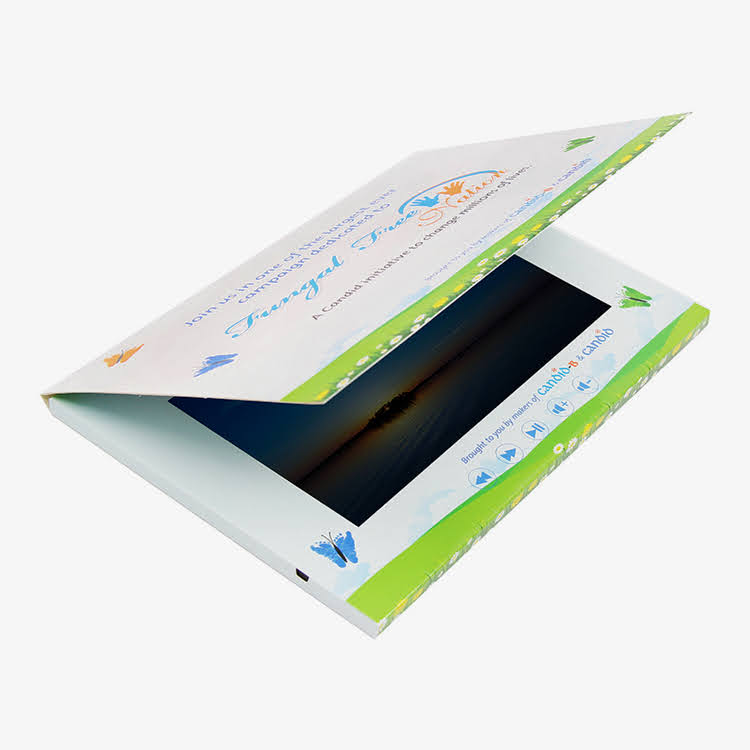Video has become one of the most powerful tools for driving sales and engaging potential customers. We only have to look as far as YouTube and the billions of hours of footage uploaded to the platform each year, some of it educational, some of it entertaining, but what sustains the platform is commercially viable video content.
Content that plants an idea in a consumer’s head and later encourages them to make a purchase. If video content couldn’t convince users to part with their hard-earned money, YouTube would have closed down ages ago, and other social media platforms that were traditionally text and image-based would not have added video support.
Whether you’re selling products, services, or solutions, understanding the key elements of a successful sales video can dramatically improve your conversion rates.
Looking at countless hours of successful campaigns, you can start to find patterns in what works, and we’ve pulled out some key learnings you can plug into your video creation formula so you can also create compelling sales pitches for your industry.
Start with a Strong Hook
The first 5-10 seconds of your sales video are crucial. This is when viewers decide whether to keep watching or click away. Begin with something that immediately captures attention – a surprising statistic, a compelling question, or a relatable problem statement.
For example, instead of starting with
“Welcome to our video about…”
try opening with
“What if you could double your sales conversion rate in the next 30 days?”
Know Your Audience Inside and Out
Successful sales videos speak directly to their target audience’s specific pain points, desires, and aspirations. Before even touching a camera, you should have a clear understanding of:
- Who exactly you’re talking to
- What keeps them up at night
- What solutions they’ve tried before
- What success looks like to them
This deep understanding should inform every aspect of your video, from the language you use to the examples you share.
Tell a Compelling Story
Humans are hardwired to respond to stories. Your sales video should weave a narrative that takes viewers on a journey from problem to solution.
Structure your story around the classic hero’s journey, but make your customer the hero – not your product. Show how your offering helps them overcome their challenges and achieve their goals.
Focus on Benefits, Not Just Features
While it’s important to showcase what your product or service does, successful sales videos emphasize the transformation it enables. Instead of just listing features, explain how each one improves your customer’s life or business.
For instance, don’t just say
“Our software includes automated reporting.”
Instead, explain how
“You’ll save 5 hours every week on report preparation, giving you more time to focus on growing your business.”
Demonstrate Social Proof
Nothing builds credibility like showing real results from real customers. Include testimonials, case studies, or concrete examples of how others have benefited from your offering.
But be strategic – choose stories that your target audience will relate to and find believable. One authentic, detailed success story often carries more weight than multiple generic testimonials.
Maintain High Production Quality
While you don’t need Hollywood-level production values, your video should look and sound professional.
This means:
- Clear, well-lit footage
- High-quality audio without background noise
- Smooth editing without jarring transitions
- Professional graphics and text overlays
- Consistent branding throughout
Poor production quality can undermine even the most compelling message by making your business appear unprofessional.
Keep it Concise and Focused
Attention spans are short, and every second counts. A successful sales video stays focused on its core message and doesn’t meander into tangents.
While the optimal length varies depending on your product and platform, generally aim to keep sales videos under 2-3 minutes unless you’re selling a complex, high-ticket item that requires more explanation.
Include a Clear Call to Action
Even the most engaging video falls flat without a clear next step for viewers.
Your call to action (CTA) should be:
- Specific about what you want viewers to do
- Easy to understand and follow
- Presented with a sense of urgency
- Repeated both verbally and visually
Consider offering a special incentive or limited-time offer to encourage immediate action.
Optimize for Platform and Context
A successful sales video is optimized for where and how it will be viewed. Videos for social media might need to work without sound and include captions while landing page videos can assume a more captive audience.
Consider factors like:
- Where will the video be hosted
- How viewers will typically watch it
- What device they’ll likely use
- Whether sound will be on by default
Test and Iterate
Finally, remember that creating successful sales videos is an iterative process. Use analytics to track viewer engagement, drop-off points, and conversion rates. A/B test different versions of your video to find what resonates best with your audience.
Pay attention to:
- When viewers stop watching
- Which CTAs generate the most response
- What messaging drives the most conversions
- Which customer stories resonate best
By continually refining your approach based on data and feedback, you can create increasingly effective sales videos that drive real results.
Secure your sales channel
A successful sales video is more than just a recording – it’s a strategic tool that combines compelling storytelling, clear value proposition, and professional presentation to drive viewer action.
By focusing on these key elements and continuously optimizing based on results, you can create videos that not only engage viewers but convert them into customers.
Remember, the most successful sales videos are those that genuinely help viewers understand how your offering can improve their lives or businesses. Stay authentic, focus on value, and always keep your audience’s needs at the center of your message.
Distributing your video
Once you’ve created your video content, slice it into the various formats required for online marketing, such as YouTube, Instagram, TikTok, and the like, and customize it for each platform.
Once you have these formats ready, upload them to your account and start to monitor the data on how users react, which versions they prefer, and what kind of feedback you receive.
If you don’t have a big enough organic audience, you can put some money behind your videos and push it towards your target audience. Once you have the data on the best-performing messaging and format, you can double down on what works best and then distribute that across all mediums, such as TV, Streaming Ads, digital billboards and even video brochures.
Ready to order your video brochures?
Curveball Media’s custom video brochures are designed to help you connect with clients, showcase your cases, and grow your firm’s brand. Contact us today to learn how we can help you take your legal services marketing strategy to new heights and bring your vision to life!
For more creative marketing ideas, check out our blog and start crafting campaigns that truly connect. Contact us now for more information.


